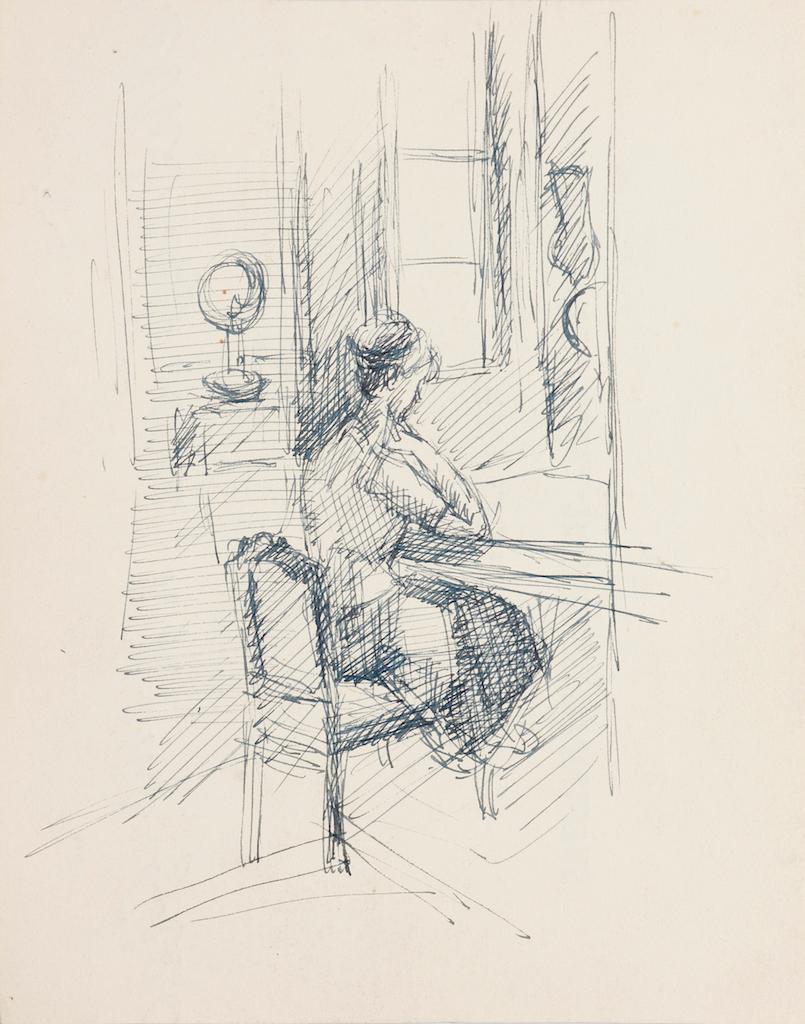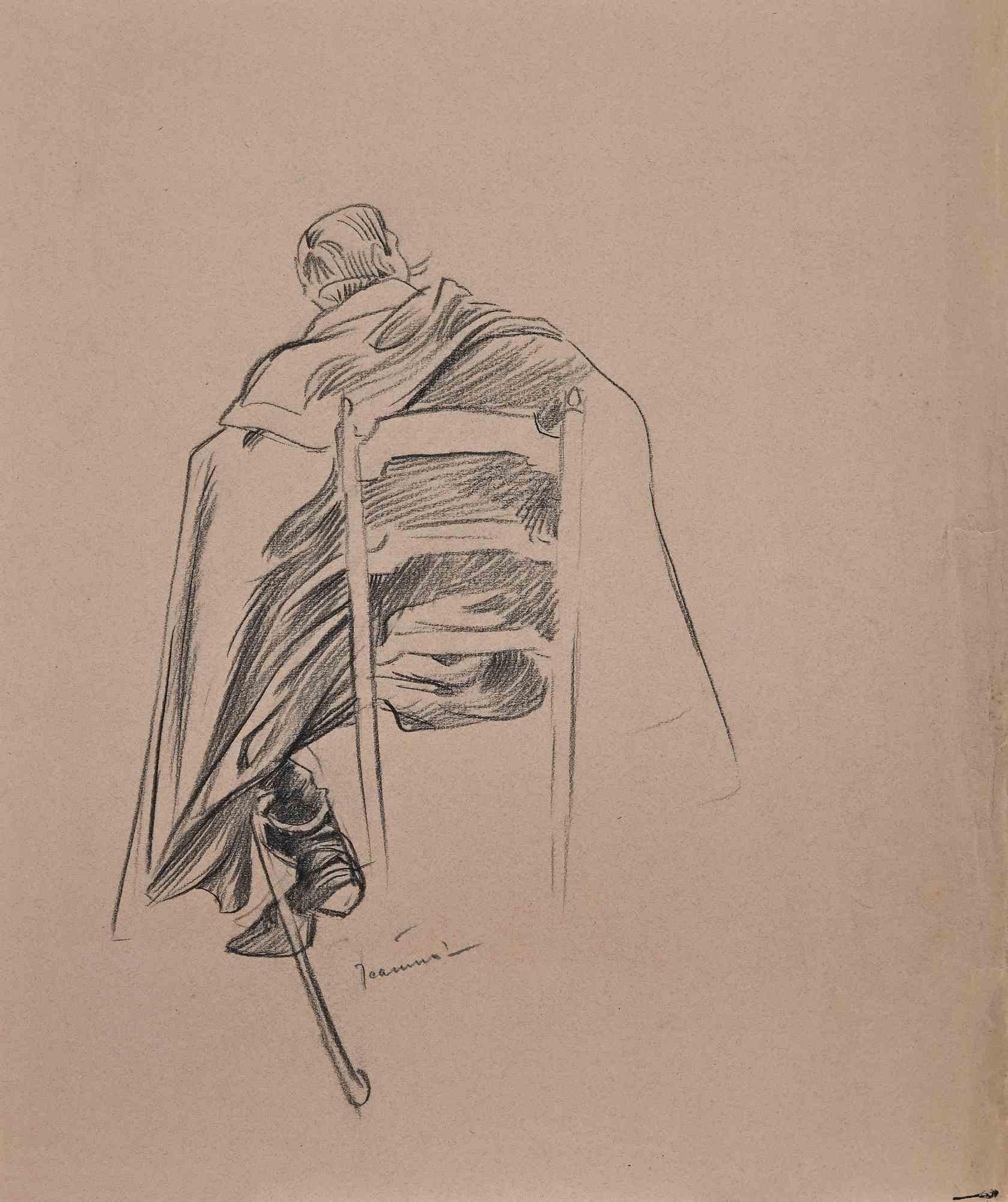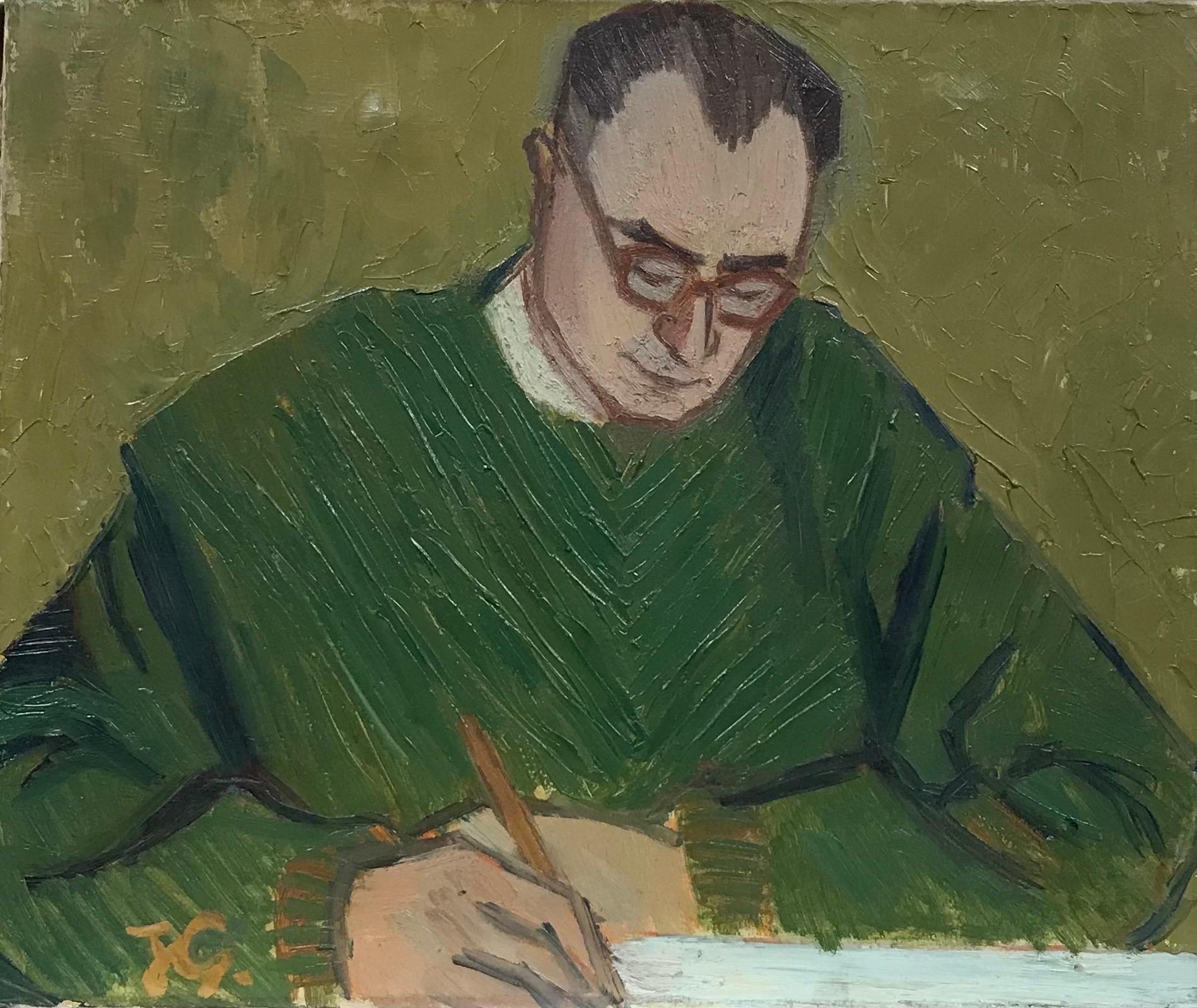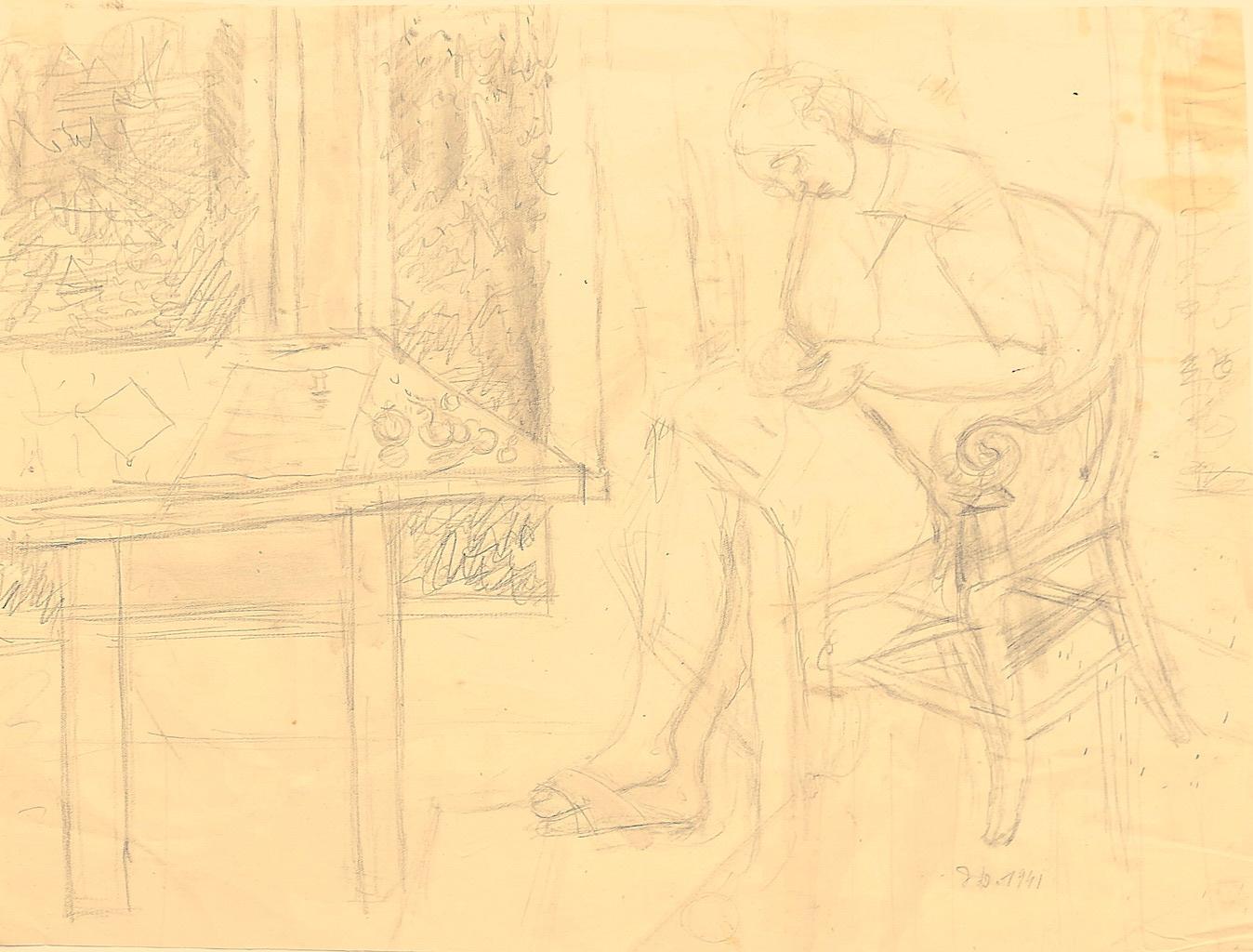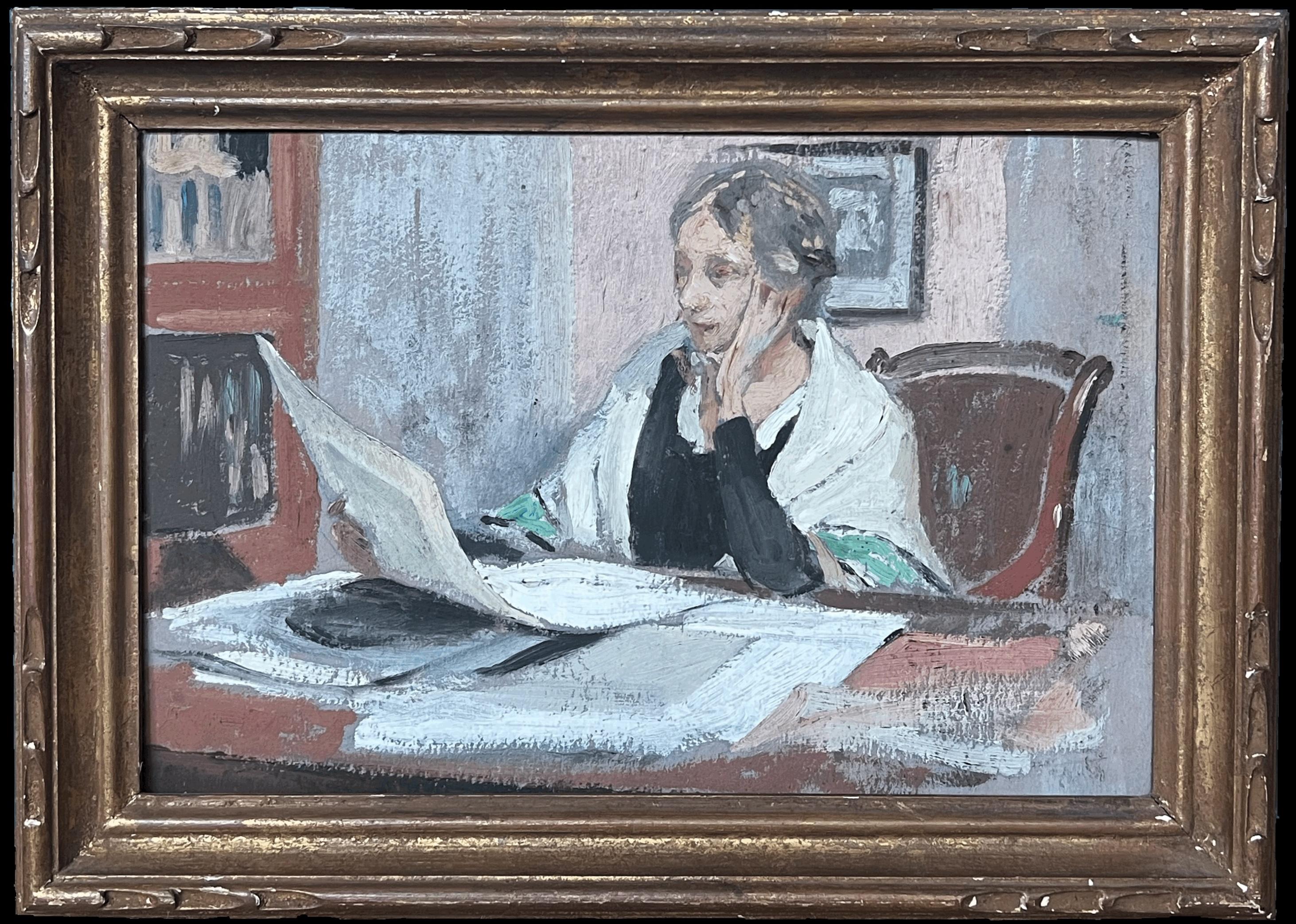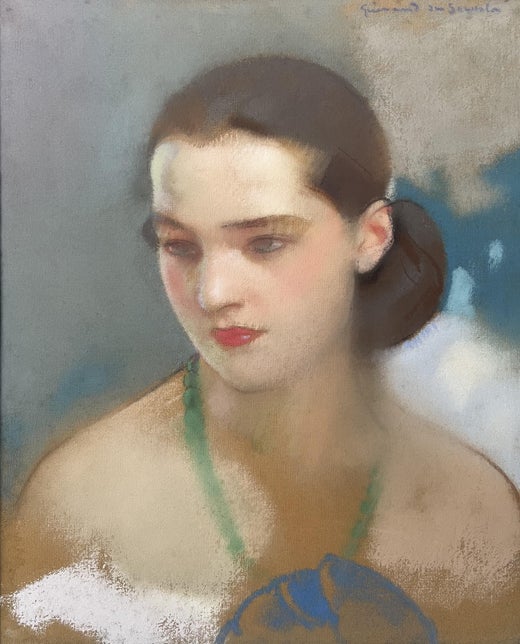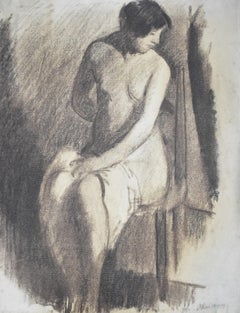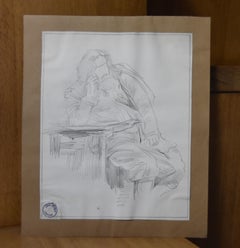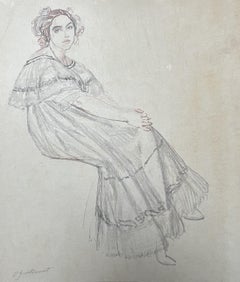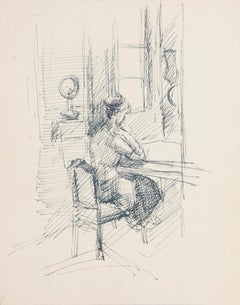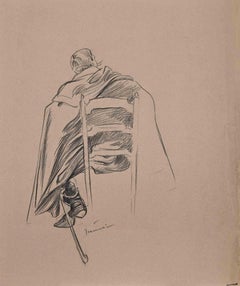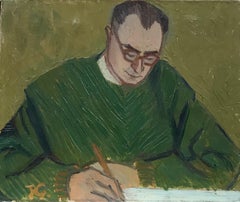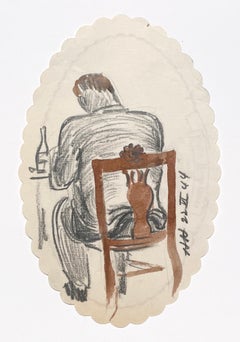Items Similar to L V Guirand de Scevola (1871-1950) A Man writing at his desk , Signed pastel
Video Loading
Want more images or videos?
Request additional images or videos from the seller
1 of 8
Lucien-Victor Guirand de ScévolaL V Guirand de Scevola (1871-1950) A Man writing at his desk , Signed pastelcirca 1920
circa 1920
$564.60
£420.45
€475
CA$779.50
A$864.19
CHF 454.17
MX$10,576.33
NOK 5,672.10
SEK 5,323.83
DKK 3,616.49
About the Item
Lucien-Victor Guirand de Scevola (1871-1950)
A Man writing at his desk, 18th century interior scene
Pastel on paper
Signed upper right
20.5 x 15.8 cm
Framed under glass : 37 x 31.5 cm
It is known that Guirand de Scevola was very interested in the Palace of Versailles and its Old Regime atmosphere, that he often painted it and that he participated in the Versailles Revival movement at the beginning of the century. This probably led him to paint scenes in the 18th century style, for which he was particularly well known and which are still sought after.
What is striking is the modernity of the execution of our pastel, which obviously contrasts with its subject in the style of the 18th century. Guirand de Scevoal is a great colourist and he proves it here with eclat, by building up his composition with white pastel highlights, contrasting with brown and black. There is something of the northern painters in this treatment of light. All this, as always with him, is very subtle. The light radiating from the window is almost an abstract notation, but it gives meaning to this interior scene.
Lucien-Victor Guirand de Scévola ( 1871 – 1950) was a French painter.
He was student of Fernand Cormon and Pierre Dupuis at the École des Beaux Arts in Paris.
De Scévola art is remarkable for his silky, velvety and smooth style.
The very first part of his career was marked by symbolism, but he later developped his own language, his Art Deco like bunches of flowers are the best known. He was also a great portraitist for the socialites and aristocrats of the period.
He was involved in several important art movements during his lifetime, and his style evolved to reflect the changing trends in French art during the first half of the 20th century. His work is often described as a fusion of Symbolism, Post-Impressionism, and elements of modernism, though he remained deeply rooted in traditional French artistic practices.
He is also known for his pioneering leadership of the Camoufleurs (the French Camouflage Department) in World War I.
- Creator:Lucien-Victor Guirand de Scévola (1871 - 1950, French)
- Creation Year:circa 1920
- Dimensions:Height: 8.08 in (20.5 cm)Width: 6.23 in (15.8 cm)
- Medium:
- Movement & Style:
- Period:
- Condition:
- Gallery Location:Paris, FR
- Reference Number:Seller: Inv 6471stDibs: LU1112212227652
Lucien-Victor Guirand de Scévola
Lucien-Victor Guirand de Scévola was a French painter. He was a student of Fernand Cormon and Pierre Dupuis at the École Nationale Supérieure des Beaux-Arts in Paris. De Scévola's art is remarkable for his silky, velvety and smooth style. The very first part of his career was marked by symbolism, but he later developed his language, his Art Deco like bunches of flowers are the best known. He was also a great portraitist for the socialites and aristocrats of the period. He is also known for his pioneering leadership of the Camoufleurs (the French Camouflage Department) in World War I.
About the Seller
5.0
Gold Seller
Premium sellers maintaining a 4.3+ rating and 24-hour response times
Established in 2018
1stDibs seller since 2019
252 sales on 1stDibs
Typical response time: <1 hour
- ShippingRetrieving quote...Shipping from: Paris, France
- Return Policy
Authenticity Guarantee
In the unlikely event there’s an issue with an item’s authenticity, contact us within 1 year for a full refund. DetailsMoney-Back Guarantee
If your item is not as described, is damaged in transit, or does not arrive, contact us within 7 days for a full refund. Details24-Hour Cancellation
You have a 24-hour grace period in which to reconsider your purchase, with no questions asked.Vetted Professional Sellers
Our world-class sellers must adhere to strict standards for service and quality, maintaining the integrity of our listings.Price-Match Guarantee
If you find that a seller listed the same item for a lower price elsewhere, we’ll match it.Trusted Global Delivery
Our best-in-class carrier network provides specialized shipping options worldwide, including custom delivery.More From This Seller
View AllJean-Pierre Laurens (1875-1932) Study of a reading monk , original drawing
By Jean-Pierre Laurens
Located in Paris, FR
Jean-Pierre Laurens (1875-1932)
Study of a reading monk
Pencil on paper
29.5 x 19 cm
Stamp of the Jean-Pierre Laurens Estate on the lower right
In quite good condition : crease and ...
Category
1920s Art Deco Portrait Drawings and Watercolors
Materials
Pencil
Henry Ottmann (1877-1927) Nude in the studio, drawing signed
By Henri Ottmann
Located in Paris, FR
Henry Ottmann (1877-1927)
Nude in the studio
signed lower right
Charcoal on paper
37.5 x 31.5 cm
In good condition
In a modern frame : 53 x 46.5 cm
Published under n°414 of the artist's catalogue raisonné (p 167 reproduced) published by Bernard Toublanc-Michel, Paris 2020
This drawing is a particularly interesting and touching example of Henry Ottmann's art. It shows his special technique, which gives priority to a kind of blur, and in this case it serves very well this scene of intimacy as if captured by stealth.
Henry Ottmann was born on 10 April 1877 in Ancenis.
He made his debut at the Salon La Libre Esthétique in Brussels in 1904 and took part in the Salon des Indépendants in Paris from 1905, the Salon d'Automne, the Salon de la Société Nationale des Beaux-Arts and the Salon des Tuileries.
In 1911 and 1912, Ottmann exhibited at the Artistes de la Société Moderne at the Gallery Paul Durand...
Category
1910s Post-Impressionist Nude Drawings and Watercolors
Materials
Charcoal
Jean-Pierre Laurens (1875-1932) Study of a sitting bearded man, original drawing
By Jean-Pierre Laurens
Located in Paris, FR
Jean-Pierre Laurens (1875-1932)
Study of a sitting bearded man
Pencil on paper
24.5 x 20 cm
Stamp of the Jean-Pierre Laurens Estate on the lower left
In quite good condition : glued...
Category
1920s Art Deco Portrait Drawings and Watercolors
Materials
Pencil
Octave Denis Victor Guillonnet (1872 - 1967) A woman seated, drawing signed
By Octave Guillonnet
Located in Paris, FR
Octave Denis Victor Guillonnet (1872 - 1967)
A young woman seated
signed lower leftt
Charcoal, red and white chalks on thin paper transfered on cardboard
49 x 39 cm
Framed : 55.5 x ...
Category
1930s Art Deco Portrait Drawings and Watercolors
Materials
Chalk, Charcoal
Octave Denis Victor Guillonnet (1872 - 1967) A naked woman seated, drawing
By Octave Guillonnet
Located in Paris, FR
Octave Denis Victor Guillonnet (1872 - 1967)
A naked young woman seated
Charcoal and red chalk on thin paper transfered on cardboard
49 x 39 cm
Framed : 55.5 x 45.5 cm
Octave Denis...
Category
1930s Art Deco Portrait Drawings and Watercolors
Materials
Chalk, Charcoal
André Eugène Costilhes (1865-1940) A young woman sewing, drawing
By André Eugène Costilhes
Located in Paris, FR
André Eugène Costilhes (1865-1940)
A young woman sewing
bears the stamp of the studio of André Eugène Costilhes in the lower right-hand corner
pencil on paper
30.5 x 20 cm
In quit...
Category
Early 1900s Symbolist Portrait Drawings and Watercolors
Materials
Pencil
You May Also Like
Reader - Original Pen on Paper by R. Cazanove - Mid-20th Century
Located in Roma, IT
Reader is an original drawing in pen on cardoard, realized by R. Cazanove.
Hand-signed on the rear in pencil by the artist.
The state of preservation is very good.
The artwork rep...
Category
Mid-20th Century Modern Figurative Drawings and Watercolors
Materials
Pen
Man Sitting - Drawing by G. Jeanniot - Late 19th Century
By Pierre Georges Jeanniot
Located in Roma, IT
Man Sitting is an Original Pencil Drawing realized by Pierre Georges Jeanniot (1848-1934).
Hand-Signed by the artist on the lower margin.
Good condition on a brown colored cardboa...
Category
Late 19th Century Modern Drawings and Watercolor Paintings
Materials
Pencil
Mid 20th Century French Post-Impressionist Oil - Portrait of Man Writing at Desk
Located in Cirencester, Gloucestershire
Artist/ School: French School, mid 20th century, signed with initials and fully verso.
Title: Portrait of a Man sitting writing, wearing spectacles and a green jacket/ jumper.
Me...
Category
Mid-20th Century Post-Impressionist Portrait Paintings
Materials
Oil
A 1940s Modern, American Scene Study of a Seated Man at a Table by Harold Haydon
By Harold Haydon
Located in Chicago, IL
A Charming, 1940s American Scene study of a Man Seated at a Table by Notable Chicago Modern Artist, Harold Haydon (Am. 1909-1994). A delightful sketch ("Dinner at the Windermere Hot...
Category
1940s American Modern Figurative Drawings and Watercolors
Materials
Paper, Charcoal, Watercolor
Interior - Drawing In Pencil - 1941
By Jeanne Daour
Located in Roma, IT
Interior is a drawing in pencil on paper realized by Jeanne Daour.
The state of preservation is good except for some foxings and stains.
Hand-signed and dated 1941, on the lower ri...
Category
1940s Modern Interior Drawings and Watercolors
Materials
Pencil
1930's French Impressionist Painting Artists Mother Reading at Desk in Interior
Located in Cirencester, Gloucestershire
The Artists Mother
by Etienne Auguste Krier (French, 1875-1953)
oil painting on board, framed
framed: 11 x 15.5 inches
board: 9 x 13 inches
condition: very good
provenance: private c...
Category
Early 20th Century Impressionist Portrait Paintings
Materials
Oil
More Ways To Browse
De Maneer
Desk Signs
Victor Man
18th Century Pastel
Art Deco Flowers Painting
Socialite Painting
Aristocrat Painting
V De Maneer
Antique Drawing Desk
Antique Students Desk
V Trend
Lucien Victor Guirand De Scevola
Guirand De Scevola
Pierre Dupuis
19th Century Watercolours Of Interiors
St Marks Cathedral
Church Interior Watercolor
William Henry Jewelry
